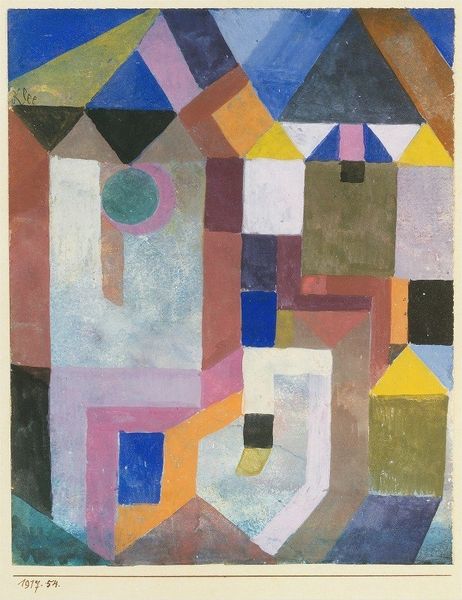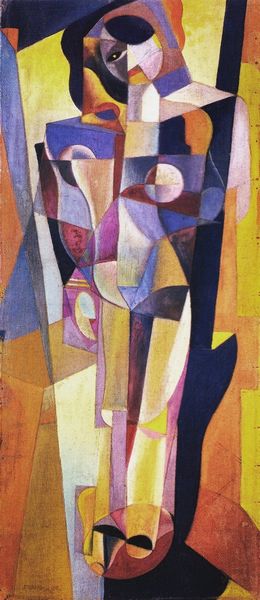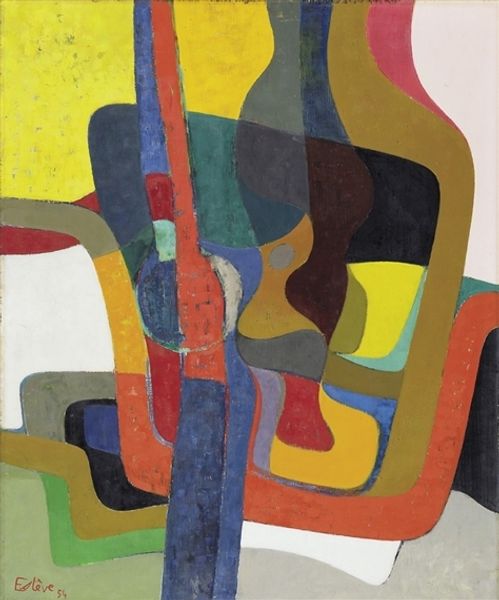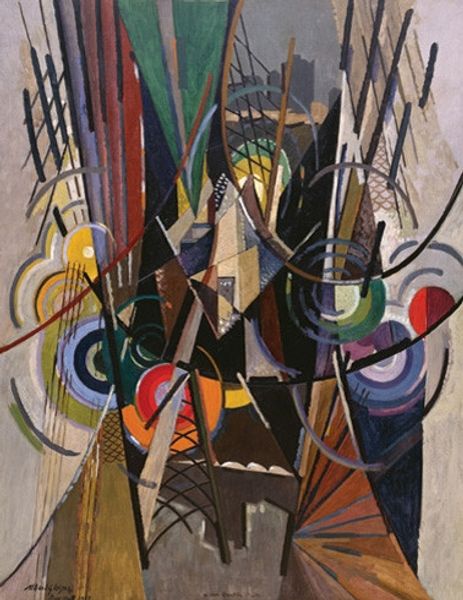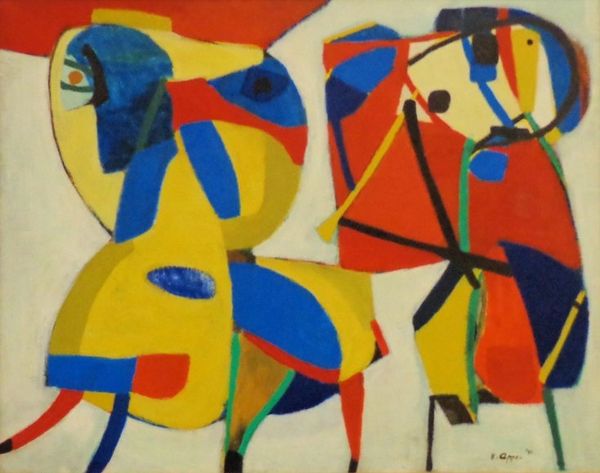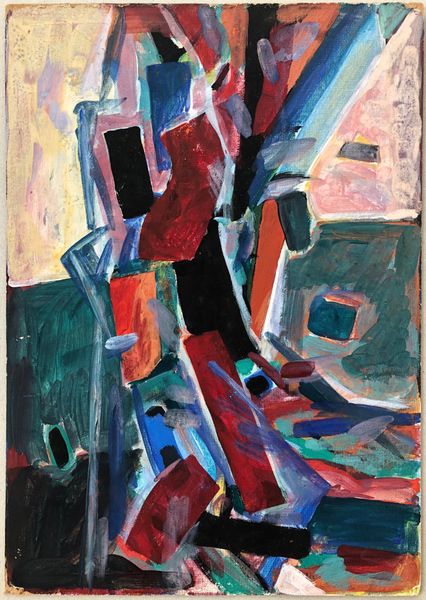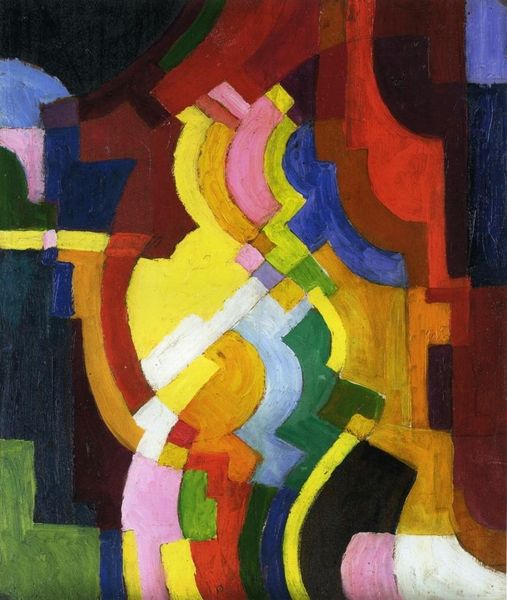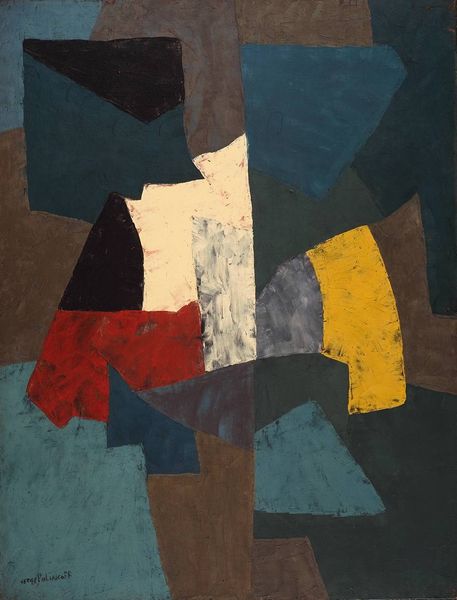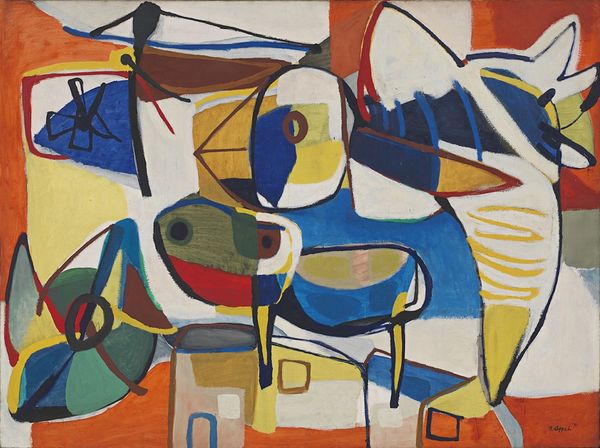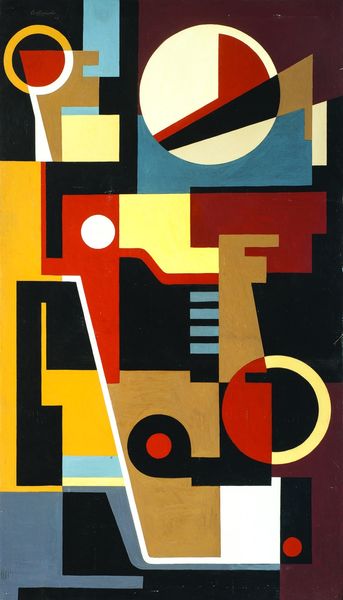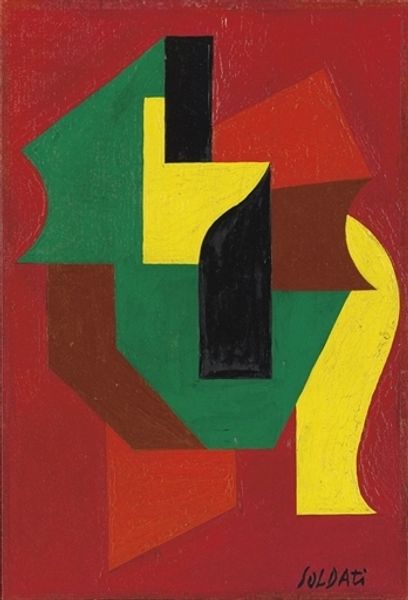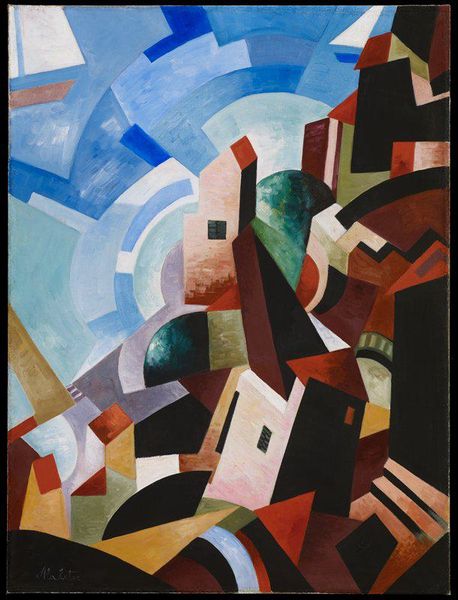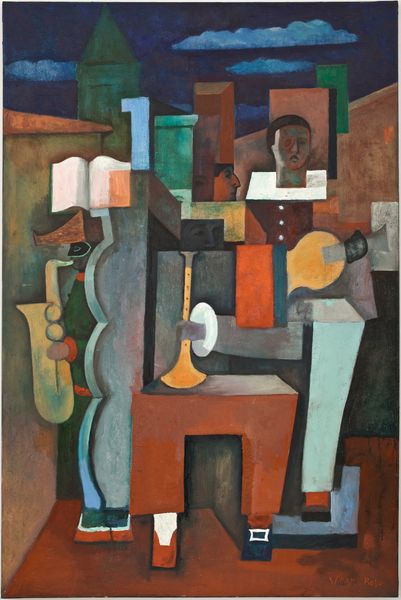
painting, acrylic-paint
#
abstract-expressionism
#
abstract expressionism
#
painting
#
pop art
#
acrylic-paint
#
geometric
#
abstraction
Copyright: Hryhorii Havrylenko,Fair Use
Editor: Here we have Hryhorii Havrylenko’s "Color Composition" from 1962, currently residing at the Sumy Museum of Fine Arts in Ukraine. The use of acrylics here is interesting. I get a somewhat disjointed feel from the geometric forms and conflicting colors. What do you make of this piece? Curator: Disjointed is a good word for it. For me, the clashing colours and fragmented shapes speak to the tensions inherent in abstraction of this era, especially when viewed through a post-colonial, decolonial lens. Ukraine, in 1962, existed within the Soviet Union. This artwork challenges notions of monolithic Soviet identity by offering this almost discordant harmony. Does that reading resonate with you? Editor: Yes, it certainly makes me think about how even abstraction can carry political undertones. But it's such a departure from Socialist Realism. Curator: Exactly! That divergence is *the* point. Havrylenko reclaims individual expression and local narrative in the face of centralized power and aesthetic control. It subtly contests what should and could be considered "Soviet Art." The seemingly clashing colours fight against uniformity and standardization. It invites a viewer to a more personal visual experience. The shapes almost appear like codes to resist narrative coherence; this would push the Soviet ideal that art should serve as propaganda. Editor: So the abstraction itself becomes a form of quiet resistance? It's about challenging dominant cultural norms. Curator: Precisely. By moving away from figuration, Havrylenko creates space for subversive and self-directed dialogues, far away from the party control. It is about using shape, color and material to negotiate with imposed reality and open the door for personal, complex ones to exist. Editor: I didn’t think to look at it that way. I am glad I was able to learn something new about Ukrainian modernism today! Curator: It shows how fruitful the marriage between art history and cultural studies can be.
Comments
No comments
Be the first to comment and join the conversation on the ultimate creative platform.
